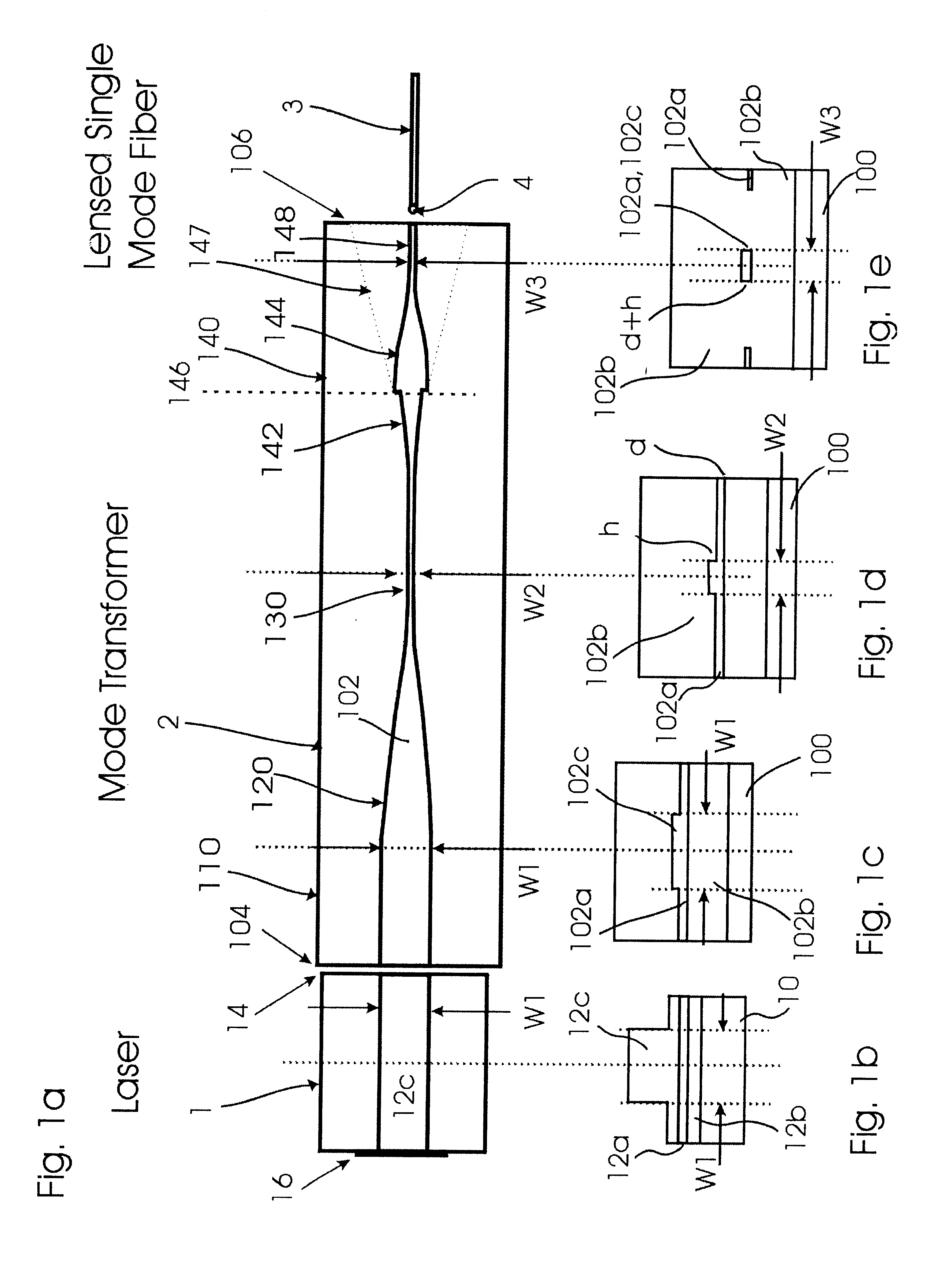Optical waveguide multimode to single mode transformer
a multi-mode, transformer technology, applied in the direction of instruments, semiconductor lasers, optical elements, etc., can solve the problems of high optical power density at the mirror of the laser, limited laser approach, mirror damage,
- Summary
- Abstract
- Description
- Claims
- Application Information
AI Technical Summary
Benefits of technology
Problems solved by technology
Method used
Image
Examples
Embodiment Construction
Throughout the specification and claims, references to "multimode" and "single mode" apply to the transverse (horizontal) dimension of the waveguide (unless otherwise stated); in a vertical dimension, it is assumed only a single (fundamental) mode is supported. In the vertical direction the peak power is always at the center of the waveguide. The output can be described as having a single lobe in the vertical direction, centered at the active region of the waveguide. In a single mode waveguide this will also be true in the horizontal direction. However, if the waveguide becomes wider, in the horizontal direction, other modes become possible. These may have, for instance, a minimum at the center of the waveguide between two symmetric maxima. There are small differences in wavelength between these two types of modes but the present invention is primarily concerned with spatial distributions of intensity.
FIG. 1a shows a top view of an optical waveguide mode transformer 2 designed to pr...
PUM
 Login to View More
Login to View More Abstract
Description
Claims
Application Information
 Login to View More
Login to View More - R&D
- Intellectual Property
- Life Sciences
- Materials
- Tech Scout
- Unparalleled Data Quality
- Higher Quality Content
- 60% Fewer Hallucinations
Browse by: Latest US Patents, China's latest patents, Technical Efficacy Thesaurus, Application Domain, Technology Topic, Popular Technical Reports.
© 2025 PatSnap. All rights reserved.Legal|Privacy policy|Modern Slavery Act Transparency Statement|Sitemap|About US| Contact US: help@patsnap.com



